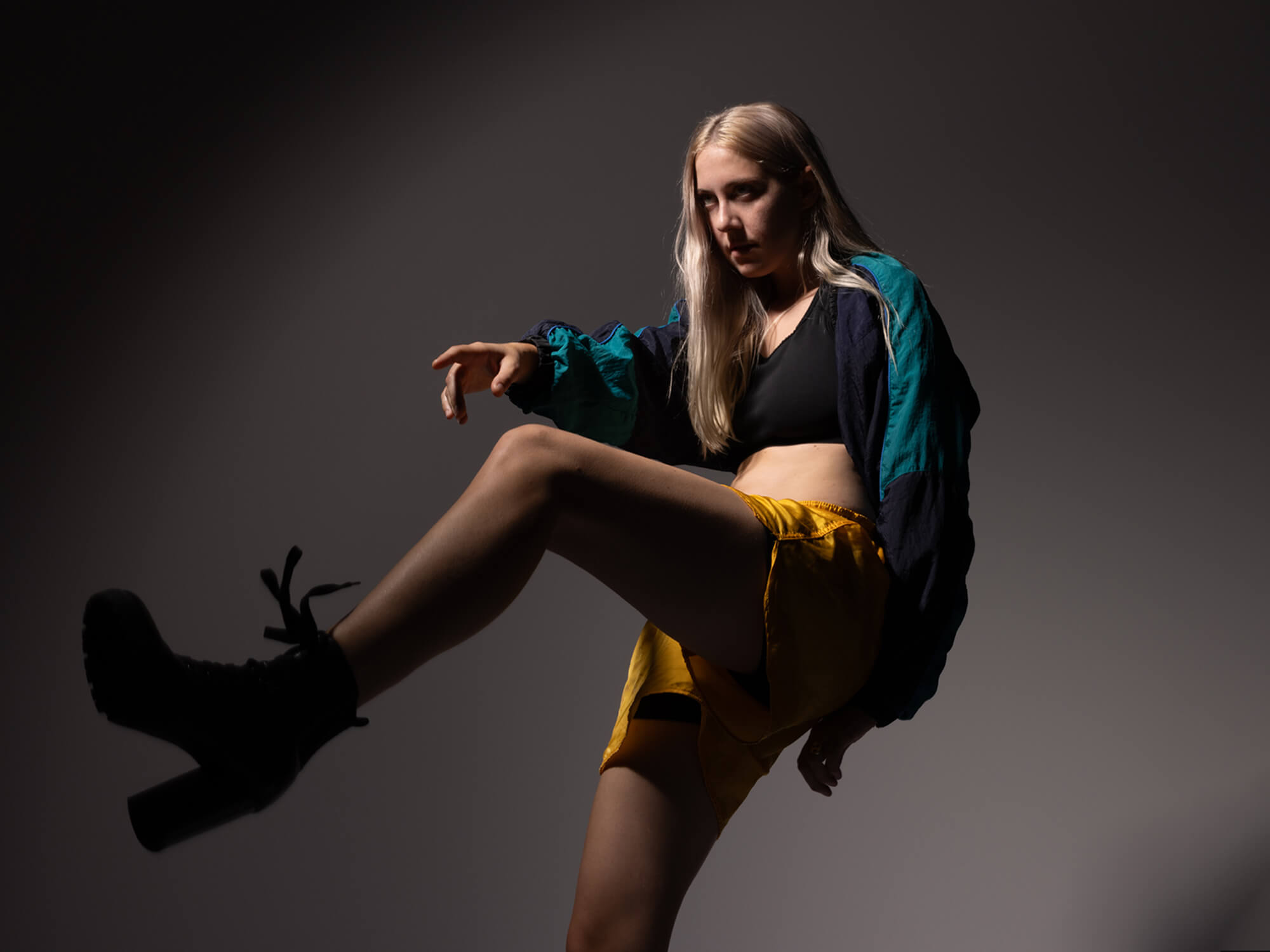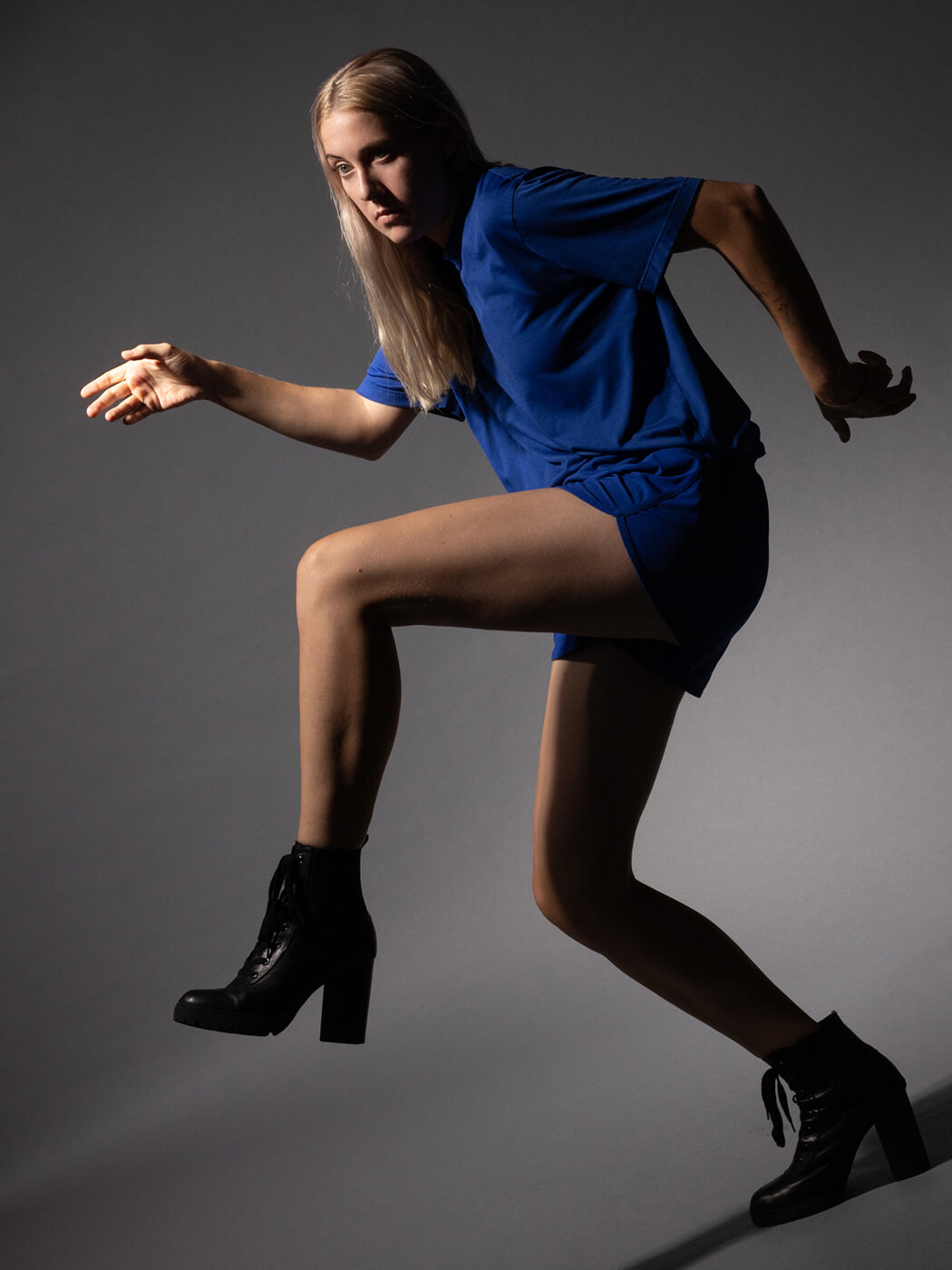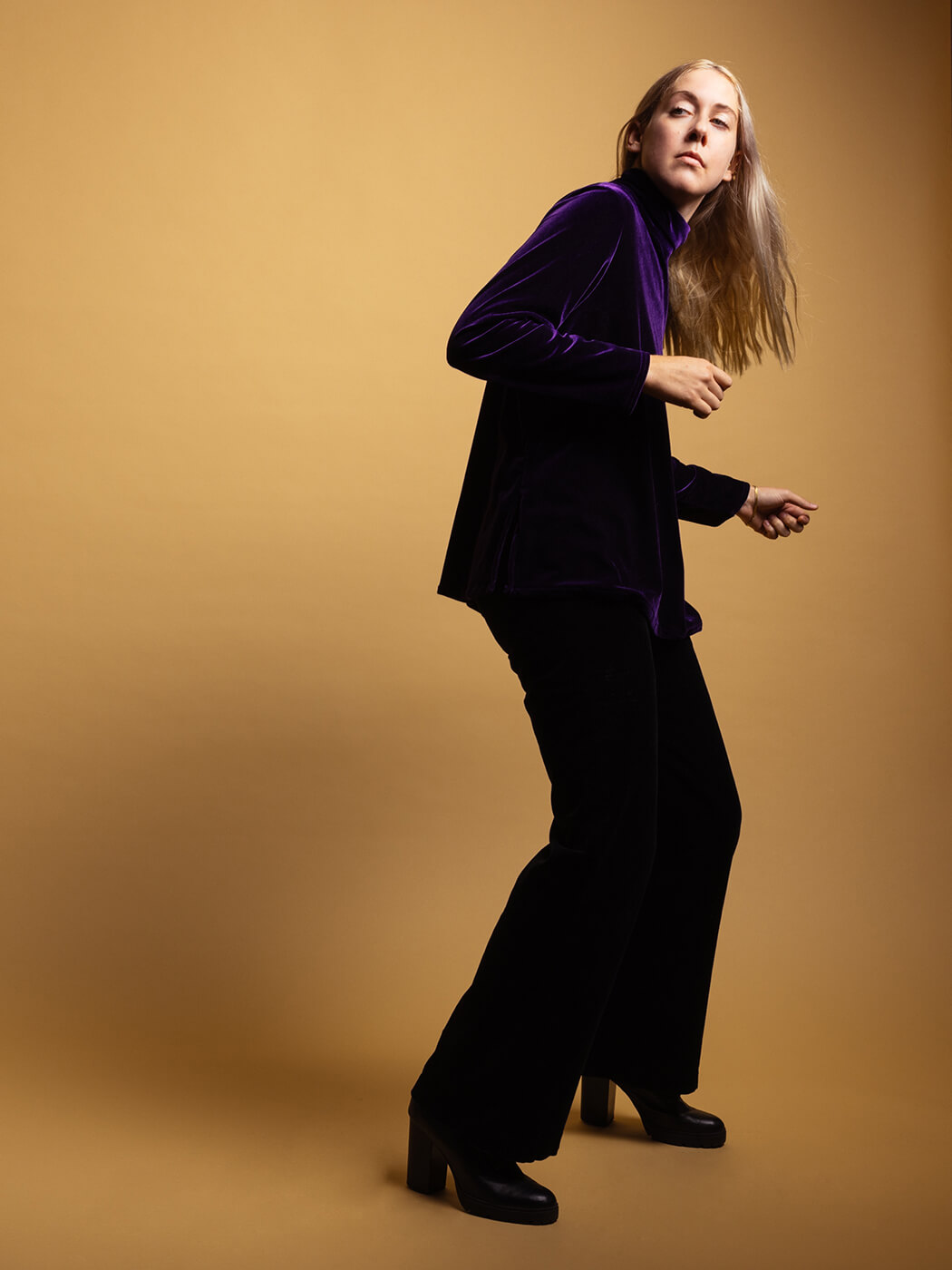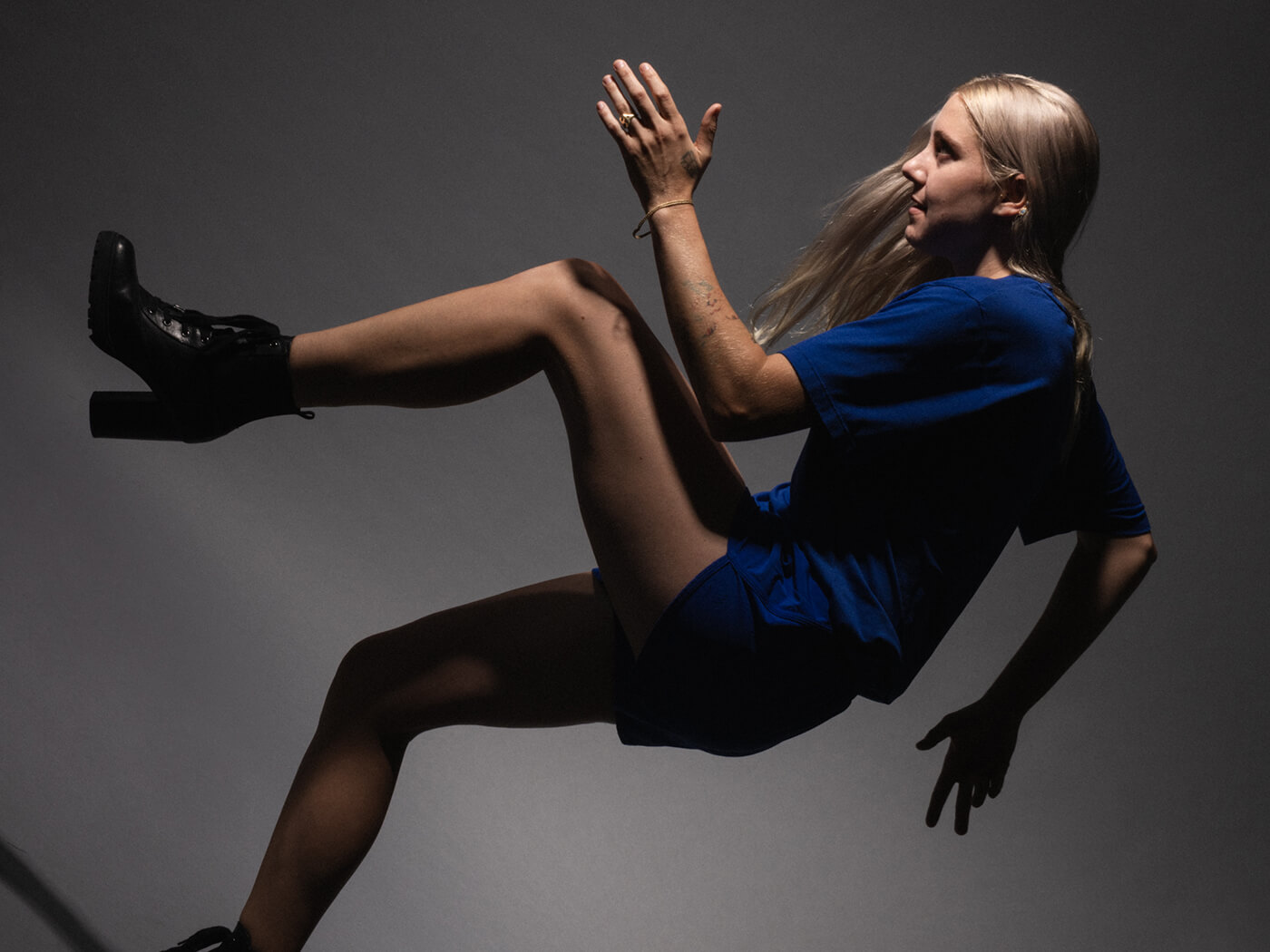Recording Torres’ sixth album in one week: “Big parts aren’t big without space”
Torres, esteemed co-producer Sarah Jaffe and their team tell us how they sampled demos to build ‘What An Enormous Room’

Torres. Image: Ebru Yildiz
“We recorded it in a week. I felt nervous about that amount of time,” admits producer and artist Sarah Jaffe. She’s talking about What An Enormous Room, the sixth album from Brooklyn-based singer-songwriter Torres.
Jaffe needn’t be nervous. She and Torres, real name Mackenzie Scott, made a lush, roiling, dynamic album that plunges into rage, fear, sadness and solace, while leaving room to breathe and warp to varying moods and interpretations.
“I had the best time,” reflects Jaffe. “I wanna make 60 more records with Mackenzie — more if she’ll let me.”
This January marks a decade since Scott’s self-titled debut album first exposed audiences to her candid, unvarnished songwriting.
Her previous album, Thirstier in 2021, was a powerful affirmation of queer love, but there was a visceral sense of fear that this romance might be fleeting. Nonetheless, it was a buoyant record; Scott’s most romantic album, revealing glimpses of her life with fiancée Jenna Gribbon, an acclaimed painter.

But What An Enormous Room is a different beast: more daring, snarly and assertive.
It’s an album rich in variation, both musically and emotionally. Scott is determined, faltering, raging and vulnerable in turns. There’s an assuredness to the strident, grungy lead single Collect, for example, in which Scott claims herself to be the angel of death with the repeated mantra, “I’m here to collect”. It’s the sort of brave, candid work that is aided and abetted by a trusted accomplice.
Scott chose artist and producer Sarah Jaffe to co-produce What An Enormous Room, after self-producing her fourth album Silver Tongue in 2020 and working with long-time producer Rob Ellis on Thirstier in 2021.
Jaffe’s lengthy career as a songwriter and performer puts her in “a place of understanding” she tells MusicTech. “Like a lot of songwriters, I come from more of a DIY background. So, I don’t always know or have the technological language to explain what I am doing or how I am doing it — but I know how to get there.
“After years of playing with formally educated musicians, it feels like I’m somewhere in the sweet spot of confidence in exploration and openness to learning.”
Scott adds, “I co-produced this record with [Jaffe] because I trust her instincts. I wanted to make a record that was accessible to people and Sarah knows how to do that. She’s not only a brilliant producer who regularly collaborates with other musicians on their work, but she’s also one of my favourite singers and songwriters. She also really knows me — not only what I like, but what I don’t like.”
Jaffe’s road to production began in earnest. She’d independently released her debut EP Even Born Again in 2008, courting the attention of NPR with the lead single Clementine. A handful of self-produced EPs and albums followed before she invited John Congleton to produce her 2012 album The Body Wins. She’s versatile both in genres and media having worked across synth-pop, hip-hop, indie folk and film scoring.
“I knew we’d be able to work quickly and somewhat telepathically with very little interference,” Scott continues.
This album is a tour-de-force of exceptional depth considering that it was only Jaffe and Scott in the studio, interchanging instrument duties as required. Jaffe recalls that Scott had a vision and the determination to make it happen, leaving no room for anxiety over the details.

“[Scott]’s not one to spend a lot of time talking about prep. She has the vision, you receive the invitation, you’re there, then you’re like ‘Oh my god, am I a drummer?’ Then it’s done,” Jaffe admits with a laugh.
“She sent me the demos in the weeks leading up to recording. I knew we would be using some of her guitar loops, or drum machine samples as the groundwork. I would record some ideas on top of her demos or share some initial thoughts on tempo or structure. I definitely knew that we would be the only two people making the noise for this record, which I was admittedly very nervous about. [Scott] didn’t bat an eye at this.”
Scott explains, “I heavily demoed the songs before arriving in NC and some of those songs ultimately were similar to their original form when we finished them. We ended up using a lot of the samples from the demos as templates for what the songs would become.
“Others, like Life as We Don’t Know It and Wake To Flowers, changed a lot in the studio and that was fun. Originally Wake To Flowers was a slow, kind of melancholy acoustic guitar song.”
Jaffe and Scott recorded at Stadium Heights Sound in Durham, NC, owned by Ryan Pickett (FOH engineer for My Morning Jacket, Jim James, and Ray LaMontagne).
Stadium Heights Sound was “brand-spankin’ new,” says Jaffe. “We were the first to break it in and make a record in it. I never felt any pressure about the studio being new. I don’t think there was any room — mentally — for that pressure.”
Jaffe arrived with limited tools: her 2017 MacBook Pro, Lacie hard drive, some notes on tempo changes, and Scott’s lyrics printed out. She had used GarageBand to record a lot of quick, instinctive ideas over Scott’s demos. Once they were in the studio, she switched to Pro Tools.
“The studio had all we needed: a beautiful live room, row of vintage amps, synths, organs, and a drum kit.”
Scott simply brought a bag of guitar pedals. “The tasty combo is two Meris pedals. A Meris Mercury7 Reverb pedal and the Meris Polymoon Modulator/Delay pedal, which very quickly became my new favourite guitar pedal. We had a lot of fun with those. There was also a good amount of Earthquaker pedals on deck.”

Jaffe’s priority was to elevate Scott’s voice and to avoid throwing too much noise into songs that benefited from space and simplicity.
“Mackenzie’s songwriting is the centrepiece,” she explains. “With solid songwriting, you can dress it up however you want, and that aspect is really fun, but it’s also really easy to get lost in. Because we only had a week to record, my main focus was on being dynamic through finding parts within her songs to hang onto, and places within her songs to give space while she was tracking. Big parts aren’t big without space, and sometimes it doesn’t need much.”
By the time Jaffe’s work was done, she says that she “knew what we had made together was magical. I think the work that was done in post-production made it ‘mega’.
“Mackenzie hired Bristol-based TJ Allen, a producer, mixer and engineer who has worked with Bat For Lashes and Portishead, to mix. After a handful of days of sending notes back and forth with him, I realised just how special this record is. He made all the colour really shine. Then Mackenzie hired [mastering engineer] Heba Kadry, who has mastered almost every favourite record of mine for the past decade. That sealed the deal.”
As the recording engineer on this album, Ryan Pickett says, “I basically kept the recording pure and simple, so there was no EQ or compression when doing the basic tracks. It all went straight through the Trident into the Antelope converters. I only used a bit of compression during vocal overdubs as I didn’t want to back Timothy James (mix engineer) into a corner sonically. I used Rupert Neve Shelford channels on Mackenzie’s vocals during overdubs.”
He explains, “Both Mackenzie and Sarah leaned heavily on my Casio MT-100 and Arturia DrumBrute when building a sonic bed for basic tracks. There were also loops created on the spot, and Sarah laid down most of the bass and drums on the session. She is simply incredible and very understated in her delivery. It was an awesome experience working with the two of them. Timothy Allen and Heba Kadry took this album to the next level in so many ways.”
Scott says, “Ryan, TJ, and Heba are all immensely talented at what they do. Ryan’s ears are so sharp; I feel like he just let the songs breathe where they needed to. He’s also a live mix engineer so he really understands dynamics in a way that served this record extremely well.
“TJ excels at taking a sonic world that’s been built and emphasising the elements that make a record special. He truly understands what I’m going for and he’s got a real artist’s mind. Heba is someone I work with as much as possible because she is the best at her craft. She knows just how far to push to get the maximum impact while maintaining nuance and huge dynamics within a record.”

Jaffe says that Scott’s vision was clear and unwavering from go to whoa.
“The vocal dynamics and effects were a conscious production decision on Collect and throughout the entirety of the record,” she relates.
In its unashamedly vulnerable and candid emotionality — whether fear (I Got the Fear), fury (Collect) or joy (Jerk into Joy) — Scott has tied the plethora of human fallibilities into a juicy, textural feast of live and synthetic instruments and beats on What An Enormous Room with a team of like-minded collaborators. If she’s here to collect, then this album has earned all her dues.
What An Enormous Room is out on 27 January 2024